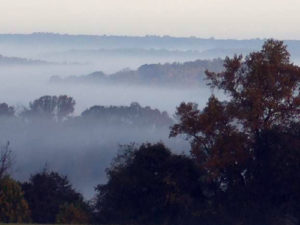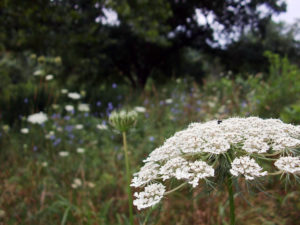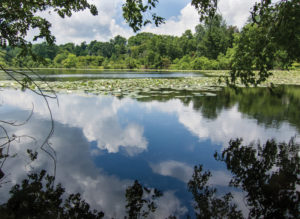Welkinweir’s natural areas are dominated by hardwood forests that rim a gently sloping stream valley, which runs through the center of the property from east to west. Tall grass meadows and successional areas straddle this tributary to the Beaver Run, which was dammed by the Rodebaughs to create a series of six ponds, ranging in size from 1/4 acre to the nearly 6-acre Great Pond. Set within the larger landscape of the Hopewell Big Woods, this combination of habitats forms a greenway corridor that provides foraging and nesting sites for a wide variety of birds and other wildlife, and preserves a rapidly vanishing pastoral landscape that has characterized Chester County for the past 300 years.
View our Trail and Habitat Map
 Forests
Forests
Welkinweir’s natural areas are dominated by forests, some of which date back to the 1850s. These extensive woodlands are home to a wide variety of flora and fauna, and are especially important to the wildlife that make their homes in forest interiors. Neotropical birds, such as the scarlet tanager, depend on this habitat for food, shelter, and areas to raise young after their spring migrations from Central and South America.
The forests and their wildlife are best enjoyed by following Welkinweir’s trails, which connect to a wider, regional network through the Horse-Shoe Trail. Click to learn more!
 Meadows
Meadows
At one time over-grazed sheep pastures, the meadows now buzz with life! From grassland birds to bees & butterflies, wildlife of all kinds make their home among the grasses and wildflowers.
Our bird box nesting trail meanders through these meadows, and uncommon birds like American Woodcock have also been recorded here on our bioacoustics monitoring network. Click to learn more!
Wa terways Complex
terways Complex
Welkinweir has a total of seven ponds: one spring-fed pond, and a string of six man-made ponds linked by a tributary to the Beaver Run. Sheltered by young forests and colonized by wetland plants, this corridor is used extensively by wildlife. A foot trail circles the pond system, anchored by the circa-1830 spring house. Here, you can observe dragonflies hovering near native wildflowers, hear spring peepers and other frogs, and marvel at the industriousness of our resident beaver family. Click to learn more!




 terways Complex
terways Complex